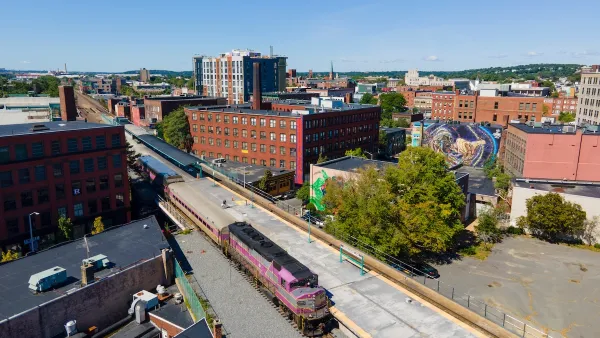Dr. Ming Zhang of the University of Texas at Austin says that Asian cities, despite their density, have a lot to learn from Western transit-oriented development practices.
Zhang lists 5 lessons Asian cities could learn from TODs in the West:
"I concluded that TOD should be further promoted in Asian cities, for two reasons. First, car ownership and car uses, although still low relative to the US, are on the rise. The newly developed areas in many fast-growing Asian cities are becoming increasingly car-oriented and hostile to pedestrians and cyclists. Second, major cities throughout Asia have seen booming development of rapid transit systems. Yet, not all of them have done well integrating the transit with surrounding functions. Many stations and their nearby land uses situate adjacent to each other without synergetic connections, leaving much of the high-density dysfunctional. TOD provides a useful framework to address the issues."
FULL STORY: The Asian TOD

Planetizen Federal Action Tracker
A weekly monitor of how Trump’s orders and actions are impacting planners and planning in America.

Maui's Vacation Rental Debate Turns Ugly
Verbal attacks, misinformation campaigns and fistfights plague a high-stakes debate to convert thousands of vacation rentals into long-term housing.

Restaurant Patios Were a Pandemic Win — Why Were They so Hard to Keep?
Social distancing requirements and changes in travel patterns prompted cities to pilot new uses for street and sidewalk space. Then it got complicated.

In California Battle of Housing vs. Environment, Housing Just Won
A new state law significantly limits the power of CEQA, an environmental review law that served as a powerful tool for blocking new development.

Boulder Eliminates Parking Minimums Citywide
Officials estimate the cost of building a single underground parking space at up to $100,000.

Orange County, Florida Adopts Largest US “Sprawl Repair” Code
The ‘Orange Code’ seeks to rectify decades of sprawl-inducing, car-oriented development.
Urban Design for Planners 1: Software Tools
This six-course series explores essential urban design concepts using open source software and equips planners with the tools they need to participate fully in the urban design process.
Planning for Universal Design
Learn the tools for implementing Universal Design in planning regulations.
Heyer Gruel & Associates PA
JM Goldson LLC
Custer County Colorado
City of Camden Redevelopment Agency
City of Astoria
Transportation Research & Education Center (TREC) at Portland State University
Jefferson Parish Government
Camden Redevelopment Agency
City of Claremont





























